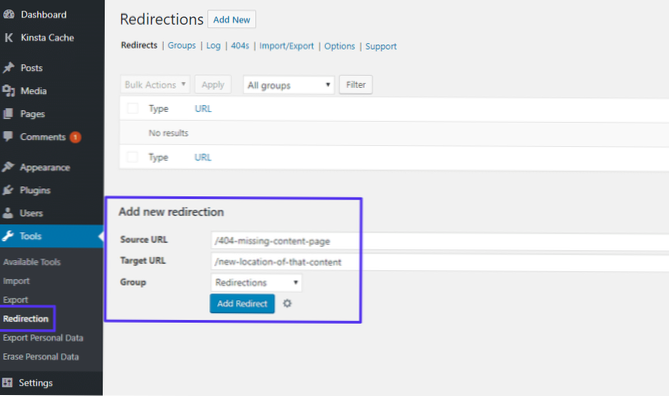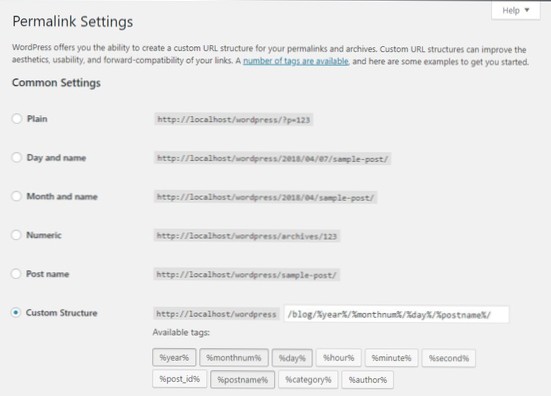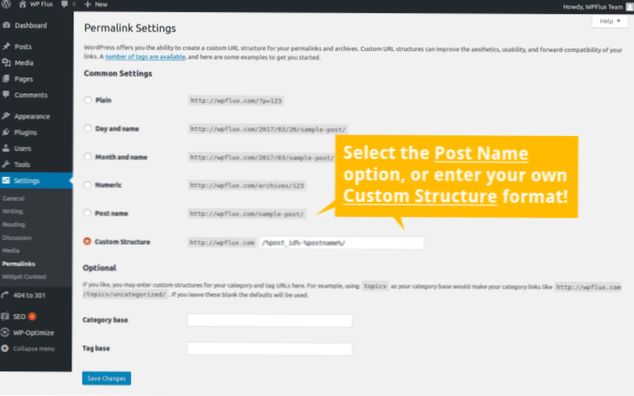- How do I find the taxonomy custom field in ACF?
- How do I add custom fields to custom taxonomies?
- How do I get ACF field in category?
- How do I find the taxonomy custom field value in WordPress?
- How do I create an ACF image field?
- How do you find the taxonomy value of ACF?
- How do you add a meta?
- What is WordPress taxonomy?
- How do I add an advanced custom field in WooCommerce?
- How do I display a taxonomic image?
- How do I get advanced custom field value in Wordpress?
- How do you find a taxonomic image?
How do I find the taxonomy custom field in ACF?
For settings Select and Multi Select, use the acf/fields/taxonomy/query filter. For settings Checkbox and Radio, use the acf/fields/taxonomy/wp_list_categories filter.
How do I add custom fields to custom taxonomies?
To add an additional field to your custom taxonomy term interface, copy everything from <tr> to </tr>, duplicate it above or below, then give the fields their own unique name. Note: If you want to create custom fields for multiple taxonomies, duplicate the code above and use a unique name for the callback function.
How do I get ACF field in category?
ACF add custom fields to categories and display
- I added the fields to ACF in the category taxonomy.
- Added this snippet into my custom category category-emails.php. $image = get_field('header_image', 'category_74'); echo($image);
How do I find the taxonomy custom field value in WordPress?
php $categories = get_categories( array( 'orderby' => 'name', 'order' => 'ASC' ) ); foreach( $categories as $category ) if($category->name != "Uncategorized") $cat_title = get_term_meta( $category->term_id, '_pagetitle', true ); echo ' <div><a href="' . get_category_link($category->term_id) .
How do I create an ACF image field?
Customized display (array)
php $image = get_field('image'); if( $image ): // Image variables. $url = $image['url']; $title = $image['title']; $alt = $image['alt']; $caption = $image['caption']; // Thumbnail size attributes. $size = 'thumbnail'; $thumb = $image['sizes'][ $size ]; $width = $image['sizes'][ $size .
How do you find the taxonomy value of ACF?
- Check the source reference from ACF. They're setting a field TO a taxonomy and then trying to retrieve that value. ...
- $image = get_field('image', $queried_object); should return an array. make a var_dump of it – Bipbip Dec 10 '15 at 16:37.
- <? php echo get_term_link( $term ); ?> –
How do you add a meta?
Adding Term Meta
- $term_id – ID of the term you want to save this metadata to.
- $meta_key – Key name of the metadata. This is how you will reference the data.
- $meta_value – The data itself (remember to sanitize)
- $unique (optional) – If the metadata key should be unique.
What is WordPress taxonomy?
Taxonomies are the method of classifying content and data in WordPress. When you use a taxonomy you're grouping similar things together. The taxonomy refers to the sum of those groups. As with Post Types, there are a number of default taxonomies, and you can also create your own.
How do I add an advanced custom field in WooCommerce?
Add custom fields to WooCommerce Products using ACF
- Step 1: Install the Advanced Custom Fields (ACF) plugin. Firstly, download and activate the free version of the Advanced Custom Fields plugin. ...
- Step 2: Add a custom field group. ...
- Create a custom field. ...
- Edit a product. ...
- Display our custom field on the product page.
How do I display a taxonomic image?
How to Display Image on Taxonomy with Advanced Custom Fields (ACF)
- First, create the image field and apply it to the taxonomy like this:
- Make sure you have the image field set to output the “Image Array” like this:
- Now, go to your taxonomy term and add an image like this:
How do I get advanced custom field value in Wordpress?
To retrieve a field value as a variable, use the get_field() function. This is the most versatile function which will always return a value for any type of field. To display a field, use the the_field() in a similar fashion. Here's a basic usage example, and please be sure to view the code example page for more.
How do you find a taxonomic image?
php $terms = get_terms( 'vehicle_type' ); foreach ($terms as $term) : echo $term->slug; $colors = apply_filters( 'taxonomy-images-get-terms', '', array( 'taxonomy' => 'vehicle_type', 'term_args' => array( 'slug' => $term->slug, ) ) ); foreach( (array) $colors as $color) : echo wp_get_attachment_image( $color->image_id, ...
 Usbforwindows
Usbforwindows



